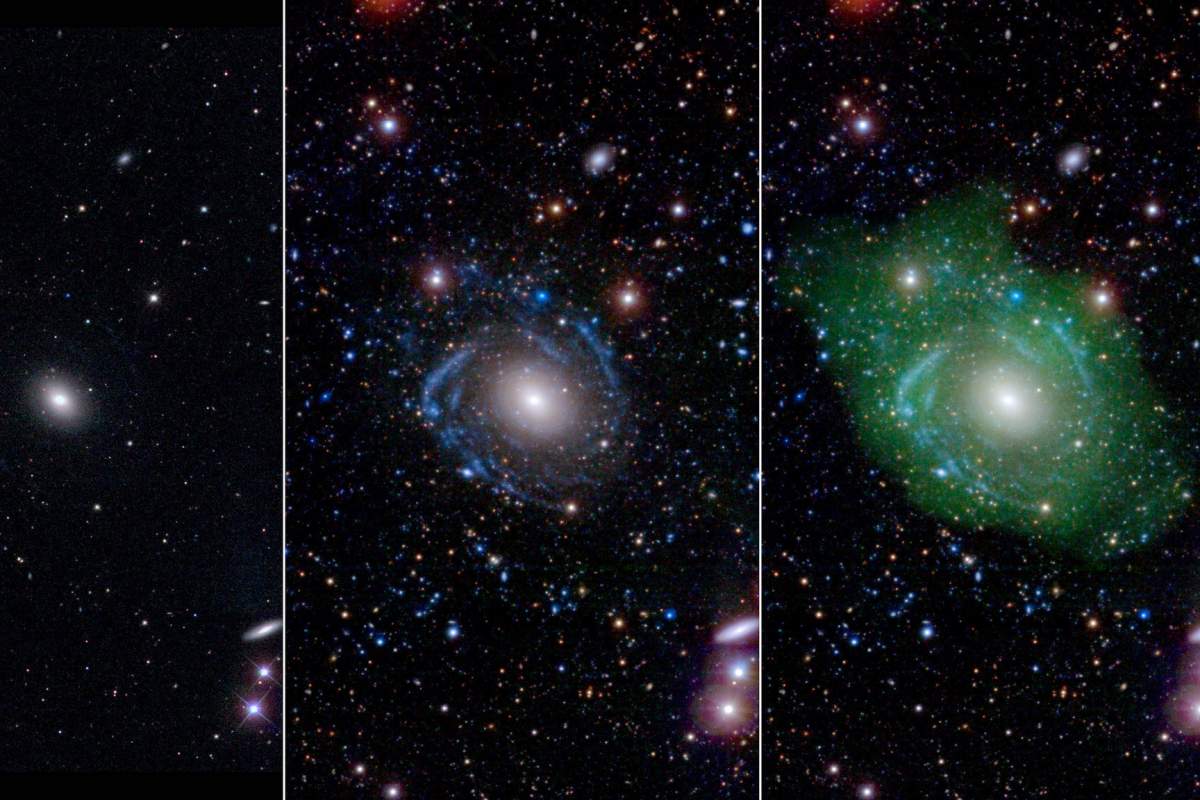
UGC 1382. On the left how it appears in optical light, in the middle how it appears with incorporated ultraviolet and deep optical light, and on the right, how UGC 1382 appears when the center view is combined with a view of low-density hydrogen gas.
UGC 1382 is a galaxy 250 million light years away from Earth. For a long time, scientists thought it was a fairly small, run‑of‑the mill galaxy. One that is elliptical, doesn‘t spin, and could be described as football-shaped rather than appearing as a flat disk.
When a couple of researchers looked at images of it in ultraviolet light, they noticed that it actually had huge spiral arms.
Then, after putting together data from a lot of different telescopes, they found that it was ten times larger than originally thought. To give a sense of how big it is: UGC 1382 is more than seven times wider than the Milky Way Galaxy.
What‘s even more interesting is that scientists theorize that the stars in the galaxy‘s center are younger than the stars in the spiral disc surrounding it. Usually, it‘s the other way around-galaxies grow outward, so stars, like tree rings, are youngest at the edges.
First, there may have been a group of small galaxies in that corner of the universe. Then, much later, a lenticular galaxy-a galaxy that is a rotating disc with spiral arms-formed nearby. More time passed, and the smaller, older galaxies fell into orbit around the larger lenticular one.
Together, they became UCG 1382 and what is colloquially being called a Frankenstein galaxy.
Sources and Further Reading:
- Aceves, Ana V. "The Making of a "Frankenstein Galaxy"." Sky & Telescope. July 18, 2016. Accessed January 04, 2017.
- NASA."Frankenstein Galaxy Surprises Astronomers." July 11, 2016. Accessed January 04, 2017.
- NASA‘s GALEX Homepage









